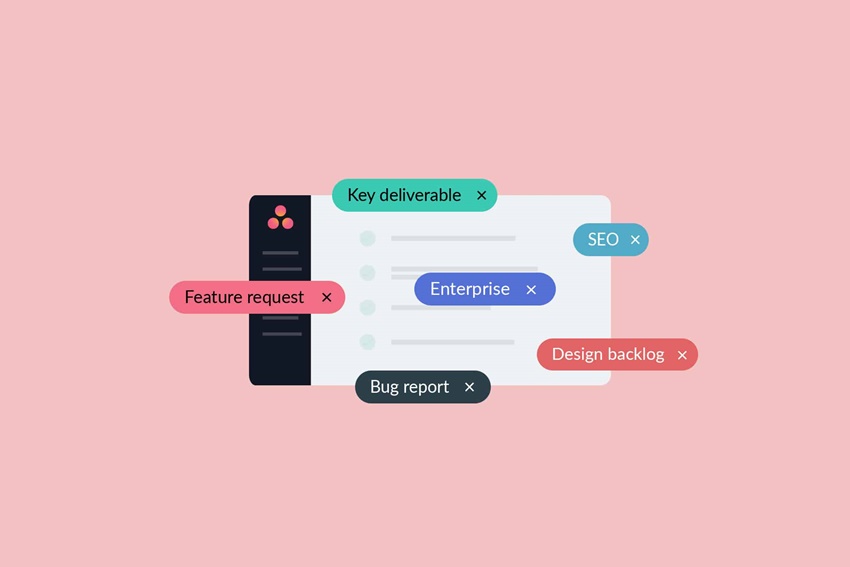If you have a business that is scaling up to include hiring a team of employees or contractors, you will benefit from the organizational support of a great project management tool. You may have heard that Asana is a powerful and free project management software designed to simplify, plan, and manage team projects and tasks through an easy-to-use and streamlined project interface for up to 15 team members, which is ideal for small businesses and personal projects. Read on to find out if Asana is your ideal right-hand assistant.
How Asana is Organized
When you first take a look around the platform, find the projects and tasks functions. Projects and tasks are the most fundamental building blocks of Asana, as this is where you’ll build whatever you’re working on, and assign the correct players.

- Organizations are based on your company’s shared email domain, and connect everyone within your company who uses Asana.
- Teams are functional groups in an organization that likely correspond to general teams, like marketing or sales, or functional groups such as “NYC Office”.
- Projects are stored in Teams (and Portfolios) to track all the actionable steps, information, and communications towards achieving a goal, initiative, or objective.
- Tasks are stored in projects and outline who is responsible for what, and by when. Tasks store all the files, conversations, and instructions related to them, so they’re easy to find in one place.
- Portfolios store groups of projects. You can use them to see all the projects and status updates towards an initiative or objective in one place.

The first thing you will need to do is sign up with Asana, which is free to use. Click “Get Started”, and then enter your email. Ideally, this will be your business address because that will be helpful with integrations and adding your other team members within your business later on.

Next, you will be presented with different options to choose from. Select the best option that represents what you do for business.
After finishing the setup, you can then “Download App” for PC and mobile use to keep up with your projects wherever you are.
You can pick your colors and customize your homepage. There are also templates available to get you started.

Just click “+”, add New Project, and “Use a Template”.

There are various templates available and you can choose what’s best for you based on your case needs and the layout look.

Asana Teams
To change the composition of teams as well as a few other things, you will need to head to the “Teams” page, accessible via the large black navigation bar on the left side of your screen.
1. How to create a task:
Once you have your first project set up, it’s time to take a look at building out the tasks, which will make up the parts of the project.
Each have four statuses to keep your visual dashboard simple, clean, and straightforward:
- To do: Here’s everything that needs to be done. I assign each task to an owner and give it a due date. You can always change these later, but it helps me prioritize what needs to happen and by when.
- In progress: All the tasks that I’m currently working on. As soon as I’m ready to start working on something, I move that task to the “In progress”status in Asana.
- Ready for review: When I’ve finished the task, I move it to the “Ready for review” stage. I then assign the task to my client to take a look and make sure everything looks good to go.
- Done: I ask my clients to go through the tasks in “Ready for review” and move them to “Done”, then mark the task “Complete”if they are approved. Otherwise, they can leave comments on the task regarding the feedback or edits they have. On each weekly call I have with my clients, I go through the tasks in the “Ready for review”list to see what’s left to be completed. This helps me see things at a glance and stay organized for each call.
Set Up Your Notes Project
It is convenient to use Asana for shared notes, because if you work with clients who all use different tools (Google Docs, Apple Notes, Evernote, and Confluence), these Asana notes can help keep you organized.
Rather than asking everyone to standardize on a single note-taking solution, you can use an Asana project and create individual tasks to put all the information, updates, and takeaways from your weekly calls. Once you’re already in Asana, you can end each meeting by adding the takeaways as tasks in your projects.

Add Tasks
To create tasks, simply hit “Add Task” at the top right of the screen or under “Task Name” in the main field below it.

Enter the Task’s Name
Next, you enter the name of the task in the field provided. Be clear, especially if you have team members working on the task, so there’s no confusion on which task it is.
Add Team Members to the Task
If others are working on the task, you will need to add people from the first column on the right, labelled “Assignee.” You can either add existing members of the team, or people from your address book. Note that you can only add one person per task as an assignee, others will be added as collaborators.

Add Priority, Stage, and Status
Finally, you can add priority to a task (the defaults are “low,” “medium” and “high,” though you can create custom fields) by clicking on the plus icon at the very end of the row. If you’re a premium subscriber, you can also add the stage a task is in, and its status.

Create Sections
To keep things simple, we’ll create three sections — the classic “to-do,” “doing” and “done” — and go from there. To do this, click on “Add Section” and fill out the name.

Move Tasks into the New Sections
Next, we need to move our existing tasks into the new sections, click on the task in the list so you get the details pane, then under “Projects,” click “Untitled Section”, and a dropdown menu will pop up with your options.

Asana is definitely one of the easiest to learn and use project management tools out there, especially for people new to using team management software. It’s worth exploring to find out if it can be a time-saving device to keep you on top of all your project statuses and manage the team members contributions to keep tasks moving forward on time.
To learn more about Asana, read The Step by Step Guide to Setting up a Team Project with Asana, Create an Outsourced Team with Asana and How to Manage a Team in Asana. Our team uses Asana for FinancingSarah.com, SightingSarah.com and TryCroatianWines.com. We organize each project in its own area and assign tasks to team members and outsourced contractors so that everything is organized at a glance. Asana makes attaching notes, pictures, video links and more resources for your team’s productivity and communication simple. Have fun exploring Asana! I hope you find it helpful for your ventures. Time you save is time you can spend enjoying life more or planning ahead to grow your business, and project management tools are one great way to help you save time, stay organized, and scale up. Subscribe for more business, sales, and investing posts. Have a lovely day!











